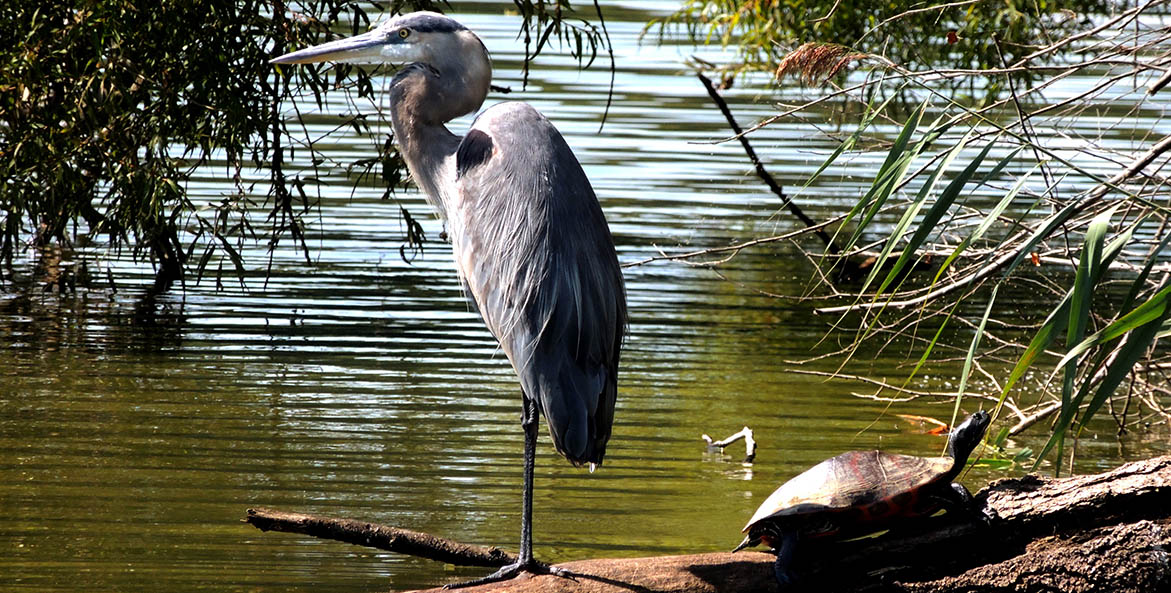The following was first published in The News Journal.
As Governor-Elect Matt Meyer prepares to take office, now is an excellent time to take stock of an important environmental issue, not just for Delaware, but the for the entire Mid-Atlantic region—restoration of the Chesapeake Bay.
More than a third of Delaware lies in the Chesapeake watershed, meaning its rivers and streams eventually flow there. This binds the First State to a regional effort—and federal investment—that's making a difference in the lives of Delaware residents.
For more than a decade, Delaware, the five other states in the bay watershed and the District of Columbia have been working toward a 2025 deadline to reduce pollution in the Bay and the rivers and streams that flow into it.
Chesapeake Bay restoration efforts have been touted as a model of federal-state-local cooperation. They have driven progress on everything from cleaner water and healthier habitats to thriving communities. Unfortunately, most watershed states, including Delaware, will not meet all their clean water goals by the deadline.
The state and federal restoration partners recently pledged to use the latest scientific findings to update the document that laid out those goals, the Chesapeake Bay Watershed Agreement of 2014, by the end of next year.
This isn't just a pivotal moment for the Chesapeake Bay. While Delaware may not border the Chesapeake, funding from the Environmental Protection Agency's Chesapeake Bay Program plays a critical role restoring tributaries like the Nanticoke, Choptank, and Pocomoke Rivers.
Those funds are also making meaningful improvements in communities across Delaware's part of the watershed, like the small town of Laurel in Sussex County.
Thanks to this funding, Laurel is redeveloping the waterfront of Broad Creek, the waterway that runs through the center of town before emptying into the Nanticoke River, which eventually flows into the Chesapeake Bay.
Laurel has an ambitious plan to protect this waterway, its most valuable resource, and make it the centerpiece of a full-scale, environmentally responsible municipal makeover.
Bay restoration grants are also financing related projects that will reduce polluted runoff into Broad Creek.
The Nanticoke Watershed Alliance (NWA) got a grant earlier this year to plant native vegetation along 600 feet of Broad Creek. This "living shoreline" will stabilize severely eroded streambanks, improve local wildlife and pollinator habitat, filter out pollutants before they reach the creek, and reduce sediment runoff by more than 60 tons annually.
Another EPA-funded grant is helping NWA use nature-based solutions like rain gardens and cisterns to keep polluted stormwater runoff from the parking lot of a downtown church out of Broad Creek.
And that's just Laurel. Tens of millions of dollars in federal and state-administered Bay restoration grants are also helping towns like Seaford, Blades, Bridgeville, Delmar and Greenwood improve both their local environment and residents' quality of life.
These investments and more like them are also needed to help Delaware meet its commitments for lowering nitrogen, phosphorus, and sediment pollution levels in its Bay tributaries.
According to the latest EPA data, Delaware has met only 9% of its goal for cutting nitrogen, 39% of its goal for cutting phosphorus and 64% of its goal for cutting sediment pollution by 2025.
Outgoing Secretary of the Department of Natural Resources and Environmental Control Shawn Garvin recently touted Delaware's work with NWA and other local nonprofit and conservation groups to lift up underserved communities in Delaware's slice of the Chesapeake watershed.
"I have complete confidence as we move beyond 2025 that the partnership will remain strong, the people will stay committed, and we will find a way to get us to the next steps," Garvin told other state environmental leaders and the governors of Maryland, Pennsylvania, and Virginia at a gathering to discuss the future of Bay restoration.
We urge Meyer and his administration to be strong leaders for clean water and committed Bay restoration partners. Bay restoration funds have already brought tangible benefits to Delaware waterways and towns. We urge you to ensure that healthy rivers, streams, and communities are part of Delaware's future as well.
—
Lisa Wool, Executive Director, Nanticoke Watershed Alliance
Alan Girard, Advocacy Director, CBF; Treasurer, NWA Board of Directors




